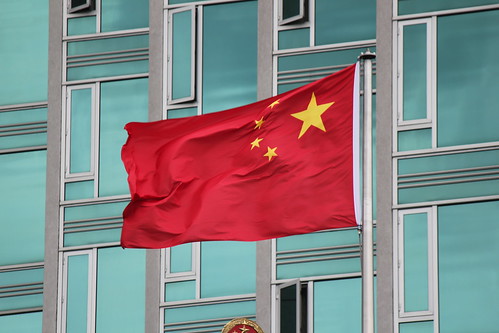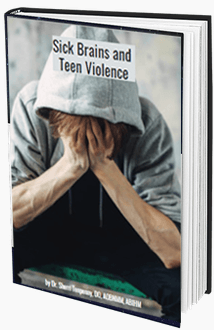by Lao Wai Ren, contributor living in China
China is a place of opulence, hyper-modernity, and contrasts. Since 1980 to the present, China has seen more economic growth than ever recorded. In the last decade alone, their economy has doubled. There are more billionaires in China than in the United States. China imports more petroleum than any other country. There are more than 50 cities with a population of at least 1 million people, and in the mega-sized metropolitan areas – Shanghai, Beijing, and Shenzhen – each has over 20 million residents. Super cities and villages alike are connected by modern airports and a high-speed rail system where trains typically go 150 mph. And despite popular ideals about traditional Chinese medicine – which is still practiced – China is all-pro vaccine, all the time.
For example, the national government granted approval to Merck to sell Gardasil in China in 2017. Similarly, officials at the FDA think so highly of Chinese scientists and manufacturing in May 2019, they approved a Chinese corporation to test a Hepatitis E vaccine in the United States. The vaccine, sold under the trade name Hercolin, has been used in China since 2012. In August 2019, the National Medical Products Administration (NMPA) approved the shingles vaccine, Shingrix by GSK, for sale in China. This vaccine is to prevent shingles outbreaks in adults over 50 years. With China’s massively aging population, this will be a goldmine for GSK.
But while the elites from Washington to Beijing sing the praises of vaccinations, the injuries and side effects caused by vaccination are pervasively apparent in Chinese children. I contend that for many years in the foreseeable future, and due to cultural filters and social practices, the realities of the vaccine injuries will grow exponentially – and will continue to be ignored. If the trends in China parallel those of South Korea or the United States in 15 years, autism will be equally as common.
Modern Vaccine Practices and Disease Outbreaks in China
According to the WHO, on a population basis, China presently has one of the highest vaccination rates in the world. Vaccine coverage rates for infants and children are at 99% for three doses hepatitis B, three doses of DTP or DTaP, and three doses of polio vaccine (one IPV and two OPV). They are also given their first dose of measle vaccine (measles-rubella) and 8-months and then the MMR vaccine at 18 months. (See National Immunization Program of China). In the name of preventing tuberculosis, over 97% of Chinese infants and children get the BCG shot and the first dose of hepatitis B shortly after birth.
Records from 2017 found two-dose measles vaccine coverage just under 93%. But in certain areas, and among the younger cohorts, rates are even higher. Back in September 2010, China conducted a synchronized, nation-wide immunization program that targeted children aged 8 months to 14 years. Covering 102 million children, 97.5% received two doses of measles vaccine (Chong et al. 2018). With such high rates of vaccination, the standard pro-vaccine belief would expect measles infection rates to drop to nearly zero. But what do recent records show?
Though the annual measles incidence has decreased to under 0.50 per 100,000 in 2012, it quadrupled to nearly 2 per 100,000 in 2013. Despite the implementation of two-dose routine vaccines since 2005, frequent outbreaks still occur.
Since 2007, Guangxi province recorded 95% coverage for two doses of measles vaccine, but large-scale measles outbreaks in 2013 and 2014, with 1341 and 3167 cases reported respectively. Tang et al. (2017) found that among all measles cases in 2013 and 2014, 63% and 51% were fully vaccinated. And extremely young children (aged 8–12 months) – too young to receive the MMR vaccine in the United States – had measles even though nearly 20% had received at least one dose of measles-containing vaccine.
In 2016, nearly 24,000 people in China were diagnosed with measles (a rate of 18 per million). By comparison, current measles rates in the United States are under 4 per million. Across China, there were 230 outbreaks. What is more remarkable is that in China, 52% of the measles cases, in children < than 15, were vaccinated.
What is the Party Line on Vaccine Injuries?
In China, the national government and public universities partner with private companies to make vaccines. This partnership promotes the globally held assumptions that all vaccines, like magic, are both completely safe and always prevent disease. Government office holders and researchers see themselves as public caretakers, therefore, any news that thousands of vaccinated children or adults contacted measles or other vaccine-preventable infection, or that a child died after a shot, is attributed to what the Chinese call corruption or incompetence.
For example, in 2017, 650,000 doses of DTP and DTaP were recalled on the claim that the vaccines evoked insufficient antibody titer levels. But in conjunction with the recall, Chinese officials were quick to explain,
“There has been no diphtheria cases reported since 2007, and the annual incidence of pertussis has dropped to less than 0.5 per 100,000 compared with an estimated incidence of 100 to 200 per 100,000 in the 1970s.”
In April 2019, a three-year-old girl died after receiving a rabies vaccine. The initial speculation was that the particular vaccine, or the entire batch, was faulty. Instead of outright blaming the highly toxic vaccine as the reason for this toddler’s death, officials assumed that either it had expired, was improperly stored, had been exposed to high temperature, or had been administered inappropriately by an unqualified medical doctor.
Unlike in the United States, where vaccine-makers and the doctors and nurses who give the injections have absolute immunity, China has steep civil fines and even criminal penalties against pharma executives and health care workers when a problem occurs. Nevertheless, Chinese law only imposes fines for sales of fake or substandard vaccines – the criminal and civil penalties do not apply if no fault is discovered (see below).
For instance, an official inquiry found that Changchun Changsheng Bio-tech (CCB) violated Chinese law in making rabies vaccines then fabricating production records and using expired materials. The company was ordered to pay fines of 9.1 billion RMB ($1.3 billion USD), and its senior executives were incarcerated.
Given the high-profile case with CCB, the government took action. A meeting was held in August 2018 and was presided over by Xi Jinping, general secretary of the CPC Central Committee, who attaches great attention to the case and has made important instructions over it on multiple occasions. He stressed that those involved in the case should be held accountable and punished severely according to the law.
Xi also instructed all-out efforts to be made to ensure the bottom line of safety and safeguard the public interest and social stability, according to the meeting.
Those who dare to “challenge the bottom line of morality and conscience” will face severe punishment and crackdown, with zero tolerance. People involved in cases that endanger public safety, such as defective vaccines, will receive severe punishment, including huge penalties and life-long bans in the sector. Officials will be motivated to earnestly perform their duties, with those derelict in their duties held accountable.
Beginning in December 2019, reports of vaccine fraud will lead to more stringent penalties. with fines reaching up to 30 times the value of sales. But when no fault is attributed to the pharmaceutical company, storage, handling, or application, families of injured or dead children, suffering from an AEFI, Adverse Events Following Immunization, they will be able to apply for compensation through the Chinese version of the US Federal Court of Claims, commonly called Vaccine Court. Similar to the American experience, payouts are rare. Far fewer than 10% of claimants receive compensation, and when they do, the awards are paltry.
What the Future Holds
Living in China, and working with children, every day I see tell-tale signs of vaccine damage and injury. But locals do not – or cannot – see the abnormalities in their children. In a country where uniformity and conformity are highly prized and a cultural norm, children are not likely to be diagnosed with “special needs.” Such would bring shame both to the family and community. American children who would be diagnosed as having ADD/ADHD are called naughty in China. They are often kicked out of public school. Others with dyslexia or related cognitive issues are ignored, shunned, or called lazy.
Growing numbers of children have eczema. allergies, and severe acne. There are thousands of children in neighborhoods who are toe-walkers. And as is the story in every industrialized and wealthy nation, all of the negative effects of vaccination – from the metal toxicity to gastrointestinal distress, and excessive inflammatory responses – are exacerbated by consumption of processed food. In the large cities, Chinese schoolchildren practically live on KFC, McDonald’s, Starbucks. Their diets are laden with aspartame-containing sweets, artificial colors, preservatives, GMOs and glyphosate.
The only two things that are slowing growing vaccine tragedy in China are:
- The number of injections China gives remains fewer than the recommended American CDC schedule, although the Hepatitis B vaccine is given within the first 12 hours of life and;
- The traditional Chinese diet is filled with greens, melons, squash, and wide-array of seasonal fruit, including mangosteen, mangos, lychees, pomelos, and more.
Without any public or official acknowledgment of the costs and the damage caused by vaccination, in the short-term, China will be a growing market for pharmaceuticals peddling stimulants such as Ritalin and Adderall, antipsychotics such as Risperidone and Geodon, and benzodiazepines, including Xanax and Ativan. If parents start to wake up, there might be a demand for behavioral therapists, and international teachers with experience dealing with problem children.
We live in a vaccination-crazed world. The country with the largest population on the planet is a prime target for pharma’s widgets.
++++++++++++++++++++++++++++++++
 Like what you’re reading on Vaxxter.com?
Like what you’re reading on Vaxxter.com?
Share this article with your friends. Help us grow.
+++++++++++++++++++++++++++++++
Photo credit: Pixaby tomasdev




Be the first to comment on "Vaccine Denialism: How Culture Affects Policy and Practice in China"